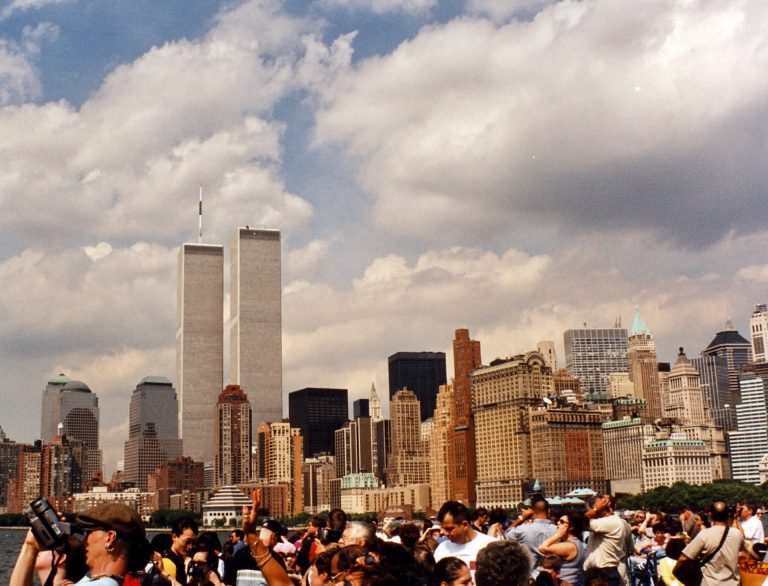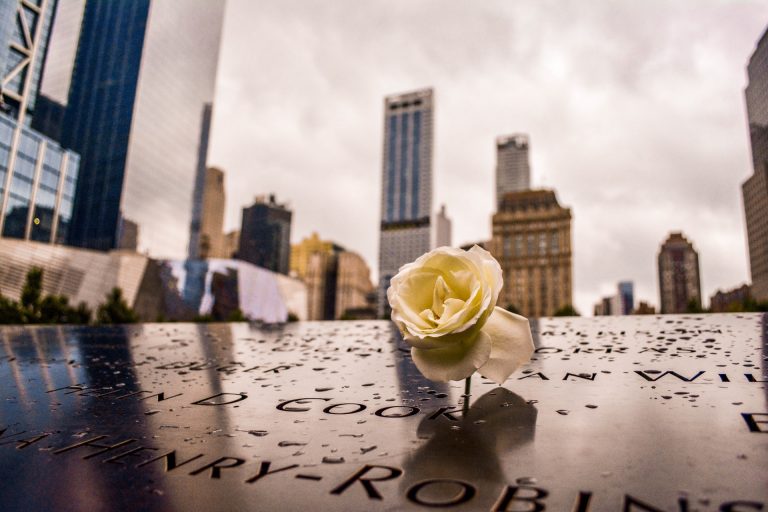Though September 11, 2001, and the days that followed were some of the darkest times in America’s history, amid the tragedy, a small beacon of hope stood at the corner of Broadway — Saint Paul’s Chapel. The church has always been a historic building welcoming visitors, but for nine months after 9/11, it became a refuge for thousands.
Today, Saint Paul’s Chapel welcomes over 1 million visitors every year. Yet few know St. Paul’s deep connection to the events of 9/11. In this guide, I’ll share what makes this chapel more than just a historic landmark and why it is beloved by so many New Yorkers today.
History of Saint Paul’s Chapel
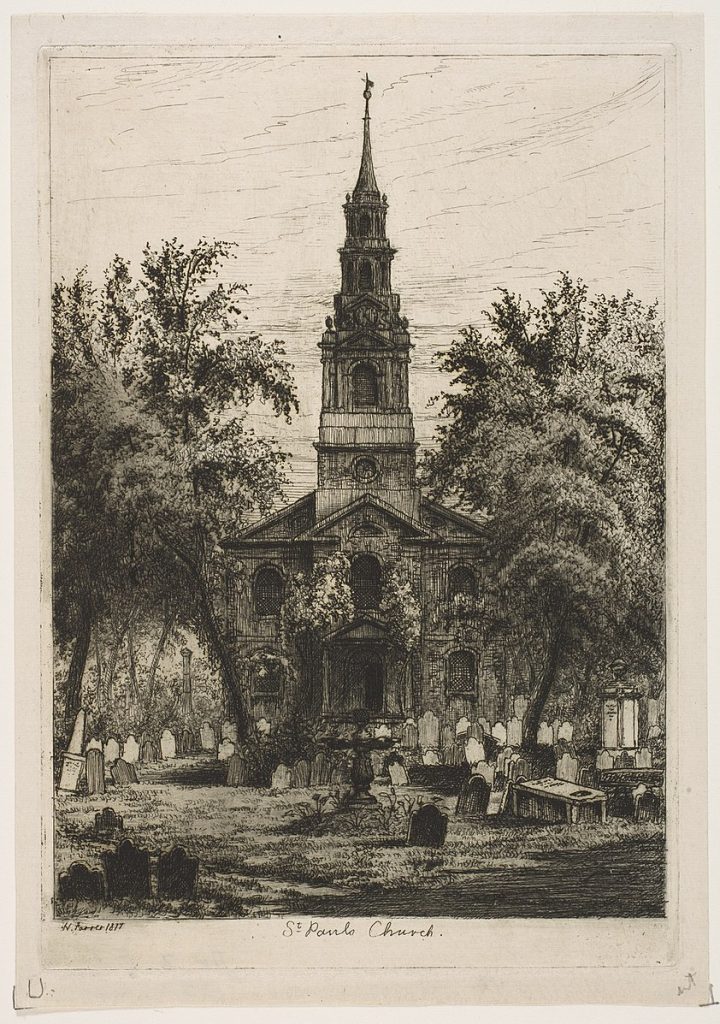
Built in 1766, St. Paul’s is Manhattan’s oldest surviving church building. Land for the church was granted by the Queen of Great Britain at the time, Queen Anne, and was designated in the Parish of Trinity Church.
The purpose of building a new chapel was to expand the services for its growing congregation. People who didn’t want to walk the extra blocks south to Trinity Church could visit Saint Paul’s, hence the nickname “Chapel of Ease.”
New York City at the time was still under British rule. The southern area of Manhattan was growing to become a major port, and most of the city had yet to be developed.
Fun fact: St. Paul’s was the tallest building in New York when it was finished.
In 1776, a great fire sparked by the Revolutionary War burned through the city and destroyed almost half of its buildings. Luckily, St. Paul’s survived with the help of a bucket brigade who poured water all over the burning church.
While St. Paul’s survived, the nearby Trinity Church wasn’t as lucky. In the years that followed — until Trinity Church was rebuilt in 1790 — many New Yorkers made St. Paul’s their new home. This includes America’s first president and war hero, George Washington. He even attended service at St. Paul’s after his inauguration on the balcony of Federal Hall in 1789.
Here are a few other notable people who have attended services at the church:
- Sir William Howe: Commander of the British army during the Revolutionary War
- Grover Cleveland: The only president to serve two nonconsecutive terms (as our 22nd and 24th president)
- George H.W. Bush: America’s 41st president

The Saint of St. Paul’s
How did St. Paul’s Chapel get its name? The namesake for the church is the Apostle Paul of the New Testament, born as Saul of Tarsus.
He was known for his dedication to the ministry and serving those who would be considered outcasts. In his name, community outreach is a primary focus of the church, which offers aid to immigrants, working women, and the homeless, among others.
Restoring St. Paul’s Chapel
In 2016, the church underwent an extensive restoration to modernize and repair the building. The interior was repainted, and landscaping was added outside. The church got air conditioning installed, repairs to the steeple, and a production room for webcasting.
The statue of Saint Paul, originally located outside the church, was restored and moved inside to prevent future damage. This statue is considered to be one of the earliest examples of Colonial American sculpture.
Saint Paul’s Chapel After September 11

Following the September 11th attacks, it was a miracle that St. Paul’s hadn’t suffered any physical damage. Not even one window had been shattered. The building sat directly across the street from the World Trade Center yet survived unscathed. People started referring to it as “the little chapel that could.”
The church gave credit to a giant sycamore for saving it from damage. The tree stood in the corner of the property, taking the brunt of the debris. Only the church’s organ suffered serious damage, but it was quickly refurbished and put back to use.
How St. Paul’s Served New York After 9/11
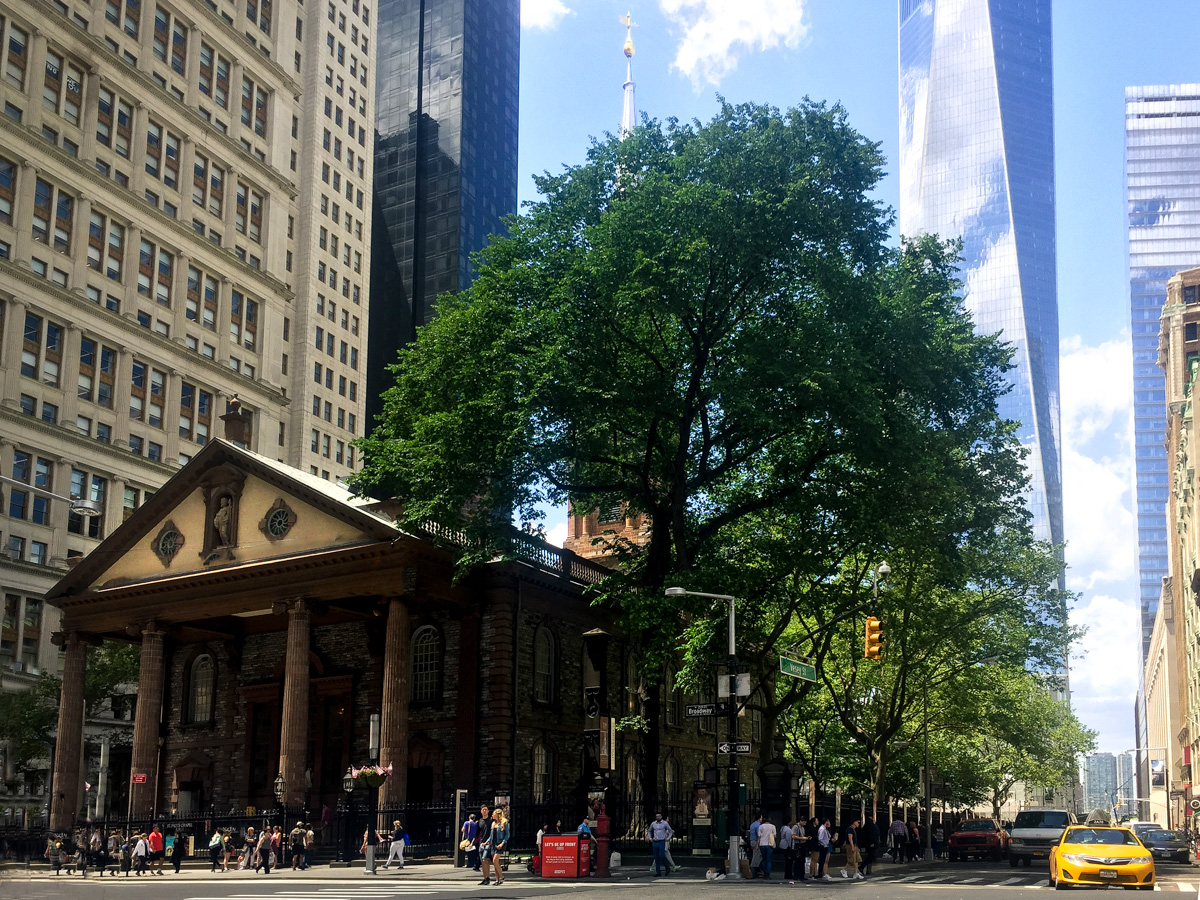
In the days and weeks after the 9/11 attacks, the church provided a round-the-clock relief ministry to Ground Zero rescue and recovery workers.
For almost a year, hundreds of volunteers would serve meals, make beds, and talk with firefighters, construction workers, and police officers. An outdoor grill was fired up to serve food to the hungry. Every day, food, clothes and other supplies would be donated by various New Yorkers.
St. Paul’s became a sanctuary for the exhausted and weary rescue workers who spent hours searching the debris. Over 3,000 people came through the chapel in just three months.
As time went on, the church became a shelter full of love, support and hope. The best of humanity came together to prove that there was still plenty of good in the world despite the devastation brought on after the attacks.
People around the world sent messages of love and support, all of which were displayed throughout the chapel for the workers to read.
The wrought-iron fence around St. Paul’s was filled with flowers, photos, banners, posters, flags, and letters as a makeshift memorial. Church officials eventually put up panels for people to add more mementos and messages. Eventually 400 panels were covered with various items of significant and personal meaning.
These efforts continued until June of 2002, when a closing service was held at St. Paul’s for the workers, and the church was reopened to the public.
Visiting Saint Paul’s Chapel Today

If you visit St. Paul’s Chapel today, you’ll notice many of the memorial banners are still on display. There are also a number of exhibits in honor of the volunteer efforts after September 11.
When you go, be sure to look for the “Thread Project.” Hanging above the pews, this art project features several multi-colored banners from around the world woven together. Another 9/11 connection to look for, the roots of the sycamore tree that saved the church from destruction are preserved in a bronze memorial in the graveyard behind the church.
Other highlights of St. Paul’s include:
- George Washington’s pew, preserved under an 18th-century oil painting of the Great Seal of the United States
- Pew of Governor George Clinton, the first Governor of New York
- Glory Altarpiece, an interior window designed by the master planner of Washington D.C., Pierre Charles L’Enfant
- Fourteen original hand cut-glass chandeliers
- Montgomery Monument, a marble memorial to General Richard Montgomery, a Revolutionary War officer buried beneath the monument
St. Paul’s is still an active church as well, hosting multiple Sunday worship services every week and often organizing interfaith prayer events.
What to Do Near Saint Paul’s Chapel

St. Paul’s sits right on Broadway in the middle of the bustling and historical Financial District. The streets surrounding the church have plenty of sights to see while you’re downtown.
Here are a few of my favorites.
9/11 Memorial & Museum
While St. Paul’s is not technically considered a part of the memorial, there is certainly much connection between the two. The 9/11 Memorial is an open-air tribute to the victims of the tragedy while the museum takes visitors through a step-by-step retelling of the events of 9/11.
The One World Observatory
Also nearby is One World Trade Center (also known as the Freedom Tower). Inside, you’ll find the One World Observatory. Similar to the Empire State Building, the observatory gives you breathtaking views of New York City from 100 stories up. You’ll be able to see New York Harbor, the Brooklyn Bridge and even the Statue of Liberty!
Trinity Church
Follow Broadway a few blocks south to visit Trinity Church, the sister chapel to St. Paul’s. The Gothic Revival, brownstone building still holds worship services, but it might be best-known, at least among travelers, for the historic Trinity Church graveyard where many famous New Yorkers are laid to rest.
New York Stock Exchange
The New York Stock Exchange stands mightily at the intersection of Wall and Broad Street surrounded by a security purpose fence.
No, you aren’t able to go inside, but the outside of the building is a designated New York landmark and it’s still one of the most influential and important monuments in the city’s history. You can visit it — and really get to know the area — with a walking tour of Wall Street.
Charging Bull
Of all the monuments and buildings downtown, the Charging Bull, sometimes called the Wall Street Bull, seems to be most symbolic of the Financial District. This giant bronze statue has become a tourist hotspot for unique pictures and all sorts of interesting poses.
Frequently Asked Questions About Saint Paul’s Chapel
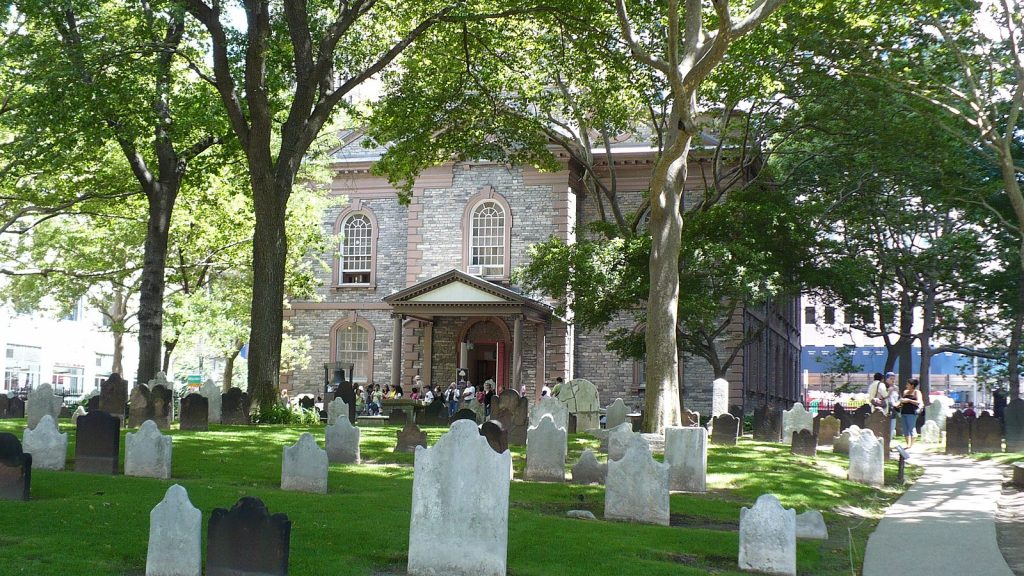
Who is buried at Saint Paul’s chapel?
There are many gravestones in the churchyard of St. Paul’s. Some of the most famous include the following:
- John Holt, printer and editor of New York’s first newspaper, The New York Gazette
- J. George Frederick Cooke, a renowned British character actor
- John Bailey, the maker of George Washington’s battle sword for the Continental Army
- Dr. Philip Turner, the surgeon general during the American Revolution
- George Eacker, a lawyer responsible for killing Alexander Hamilton’s son, Philip, in a duel
Guide tip: Many people believe Alexander Hamilton to be buried in St. Paul’s when he is actually buried in Trinity Church. However, there is a Hamilton connection here. Hamilton was an officer of The Hearts of Oak, a militia unit who would drill in the St. Paul’s yard during the Revolutionary War.
Is Saint Paul’s a Catholic church?
No, Saint Paul’s is an Episcopal chapel. But people of any faith are welcome.
Who built Saint Paul’s?
The church was designed by Thomas McBean and built by a craftsman named Andrew Gautier.
When can I visit the church?
Typically, the church is open from 10 a.m.-6 p.m. Monday through Saturday and 8 a.m.-6 p.m. on Sundays.
However, due to the coronavirus, St. Paul’s is temporarily closed to the public until Nov. 29, 2020.
An NYC Icon at Ground Zero: Saint Paul’s Chapel
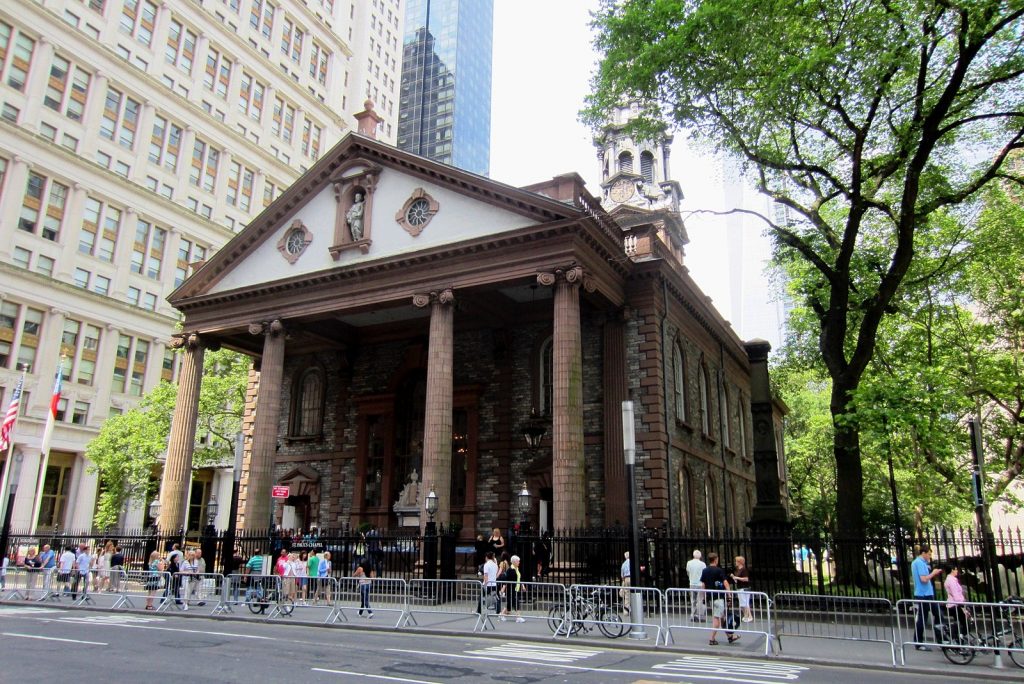
Even all these years after 9/11, the church still remains a symbol of recovery and hope. Its story inspires visitors still today, reminding us that true healing happens through community.
If you want to experience St. Paul’s and its historic role at Ground Zero, visit with one of our guides who has a personal connection to 9/11. Both of our Ground Zero walking tours begin at St. Paul’s Chapel, where we’ll tell you all about the church and then continue on to the 9/11 Memorial.
Feature photo credit: Djnichols62 / CC BY-SA 4.0

